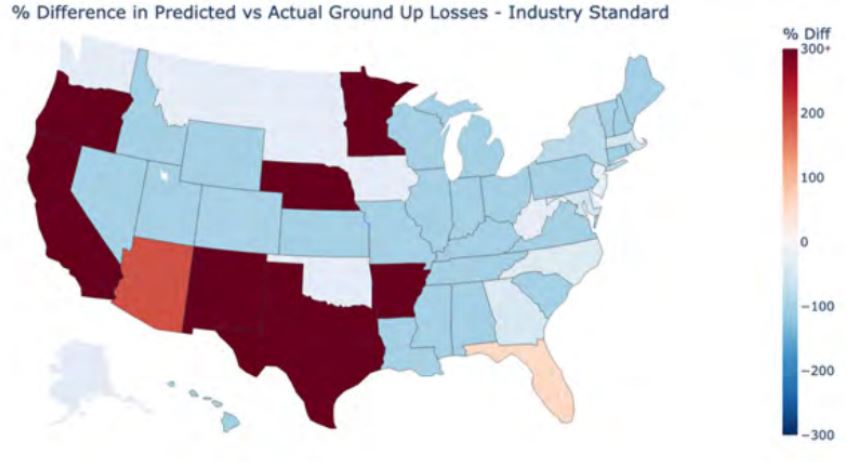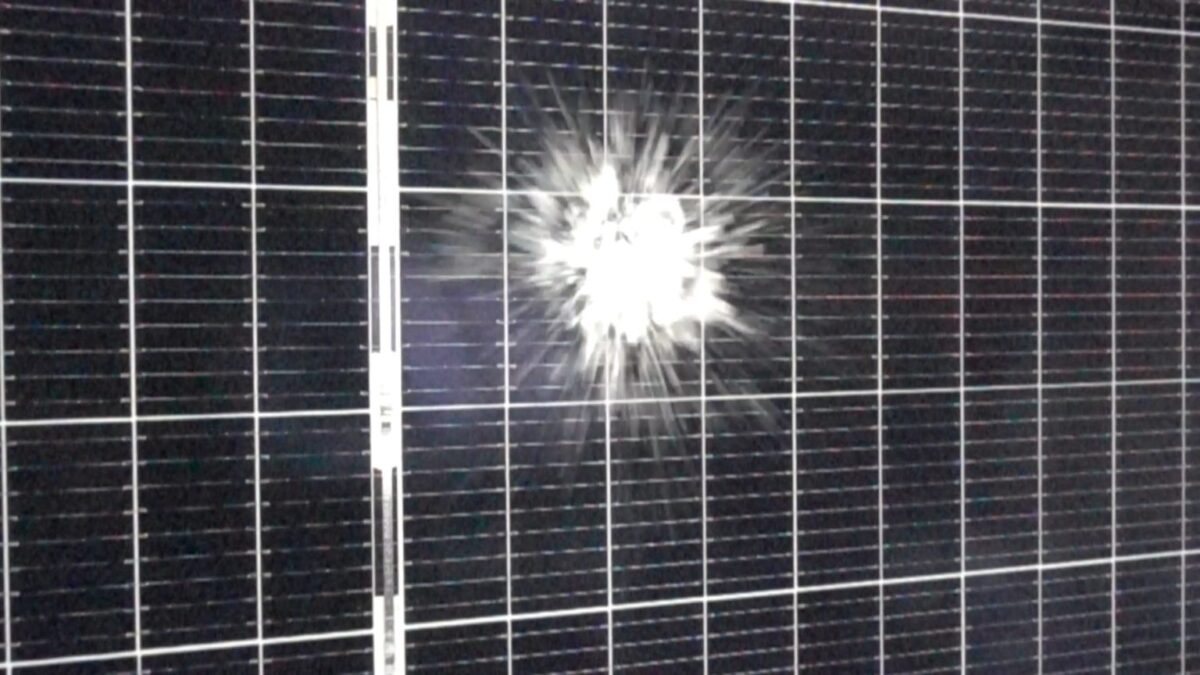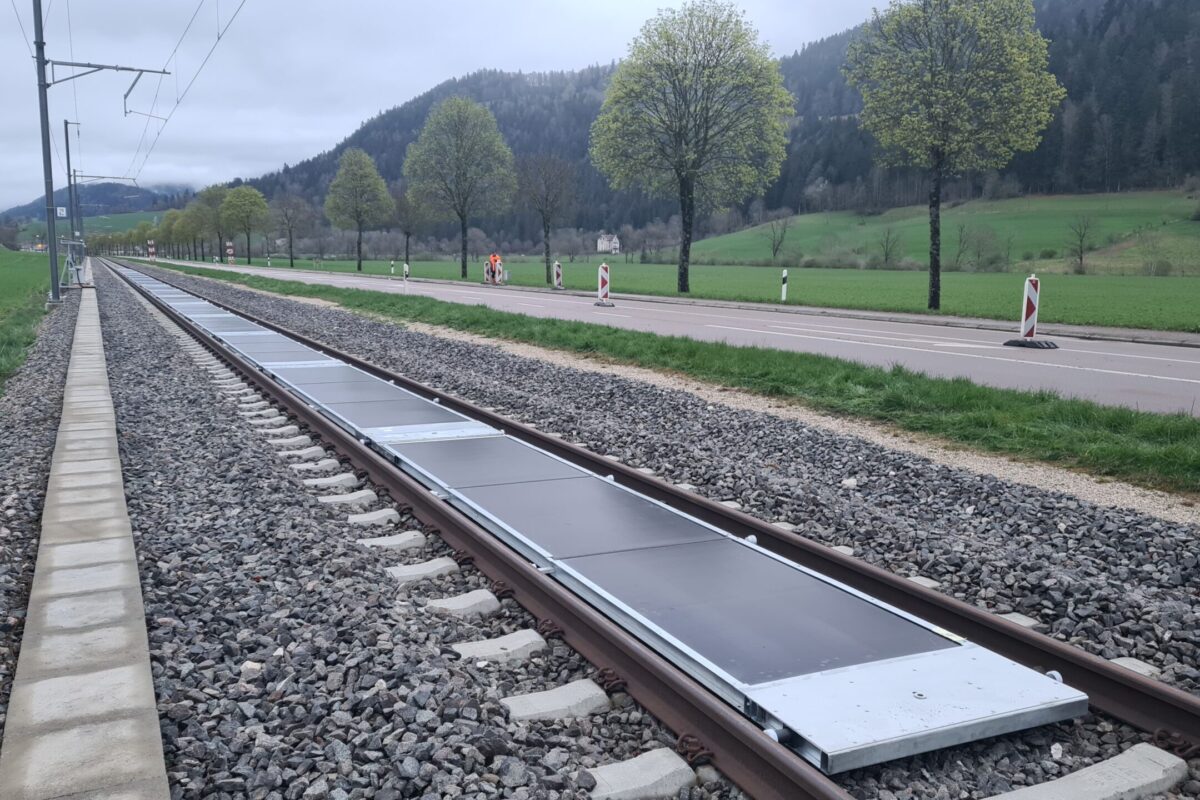A report from kWh Analytics, a climate insurance provider, released its 6th annual Solar Risk Assessment report, providing a data-driven overview of risks to solar assets. The report included contributions from solar industry leaders in technology, financing, and insurance.
“To meet renewable energy deployment goals, the focus needs to be on smart growth – relying on data to inform decisions and utilizing resilience measures to protect assets,” said kWh Analytics chief executive officer Jason Kaminsky.
The report identified 14 risks to be aware of in the solar industry, including risks related to extreme weather and operational risks. For the first time this year, battery energy storage-related risks were included. This news covers the extreme weather risks, with subsequent articles reviewing operational and storage-related risks.
Modeling assumptions underestimate losses from weather damage by 300% or more
Data from kWh Analytics found that risk modeling for damage from weather events has been heavily overlooked. Particularly in large solar markets like California, Texas and Arizona, actual ground-up losses from weather events have been as much as 300% or more than what has been modeled by asset owners.
kWh Analytics said that as PV is a relatively new asset class, natural catastrophe models typically used to size insurance premiums often rely on proxy structures to estimate losses. The company said more accurate PV-specific modeling is needed, and differences in technology used (like trackers with hail-stow protection) should be considered in risk modeling.
The insurance provider has developed new models leveraging locational-specific risks, backed by data from the National Renewable Energy Laboratory (NREL), significant loss data and satellite imagery to provide a more accurate risk assessment.

Modules perform well after significant cell damage
Reliability testing from Kiwa PVEL found that broken cells from impacts like hail are less catastrophic to solar module performance than one may expect. No module tested by PVEL lost more than 3% production after undergoing a hail stress sequence.
The testing lab said that rather than relying on expensive electroluminescent (EL) testing, it would recommend that asset owners perform annual aerial thermal scans to identify cracked modules that have developed hotspots and are at risk for fires and in need of replacement. Fire risks are most severe in the rare case that a module with a failed bypass diode has cracked cells.
Modules protected by hail stow post only 0.8% power loss
Waaree found that lab-tested solar modules that tilt to a stowed position to protect from direct hail impacts only lose 0.8% of their production from being in a sub-optimal angle during hail events. In turn, the modules were able to avoid damage altogether by stowing. The losses perform far better than the IEC standard of 5% losses from stowing.
Solar project insurance costs can be reduced by up to 50% by investing in resilient design and maintenance
Data from Alliant Power found that assets in high-risk areas can reduce insurance costs by up to 50% by investing in resilience measures like selecting heat-tempered panels and trackers that enable hail stowing.
“It pays to take time to differentiate your project and select highly qualified partners when it comes to risk and insurance,” said Alliant Insurance Services.
Natural catastrophe events are on the rise, with billion-dollar weather events increasing from an average of 13 per year in the 2010s to an average of 22 per year in the 2020s, with 28 billion-dollar damage weather events occurring in 2023 alone, said Alliant.
Asset damage probability is 87% lower with a 75-degree hail stow tilt
Solar developer Longroad Energy shared a case study under which different tilt angles and their impact on module protection from hail impacts were assessed. The report was based on data from RETC and tracker provider Nextracker.
It found that a 50-degree stow led to a 33% estimated module breakage probability, while 60-degree stow had an 8% probability, and 75-degree stow led to only a 1% risk of breakage from hail.
The next report in this series will review the kWh Analytics assessment of solar asset operational risks.
For more on quality issues in utility-scale solar, sign up for a free webinar on Racking and trackers: quality issues in the factory and design considerations for utility-scale solar installations, June 11 at 11 a.m. ET. Register here.
This content is protected by copyright and may not be reused. If you want to cooperate with us and would like to reuse some of our content, please contact: editors@pv-magazine.com.




1 comment
By submitting this form you agree to pv magazine using your data for the purposes of publishing your comment.
Your personal data will only be disclosed or otherwise transmitted to third parties for the purposes of spam filtering or if this is necessary for technical maintenance of the website. Any other transfer to third parties will not take place unless this is justified on the basis of applicable data protection regulations or if pv magazine is legally obliged to do so.
You may revoke this consent at any time with effect for the future, in which case your personal data will be deleted immediately. Otherwise, your data will be deleted if pv magazine has processed your request or the purpose of data storage is fulfilled.
Further information on data privacy can be found in our Data Protection Policy.